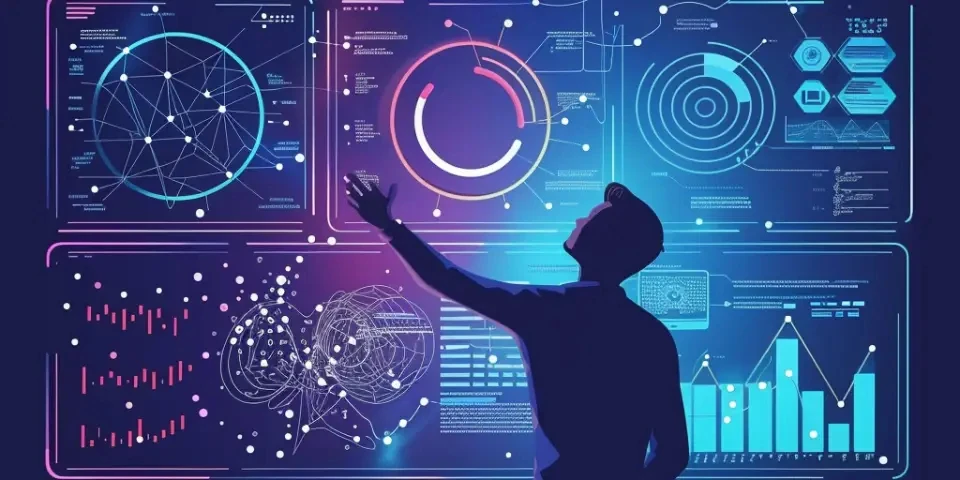Exploring the Depths Unveiling the Power of AI in Deep Sea Exploration
Deep sea exploration has always been a captivating field, filled with mysteries and wonders waiting to be uncovered. In recent years, the advent of Artificial Intelligence (AI) has revolutionized this domain, enabling scientists to delve deeper into the ocean depths than ever before. Let's take a closer look at how AI is reshaping deep sea exploration from various perspectives.
1. Autonomous Underwater Vehicles (AUVs)
One of the key applications of AI in deep sea exploration is the development of Autonomous Underwater Vehicles (AUVs). These vehicles are equipped with AI algorithms that allow them to navigate, collect data, and make decisions without human intervention. AUVs can perform tasks such as mapping the seafloor, gathering biological samples, and even repairing underwater infrastructure.

The integration of AI into AUVs has not only increased their efficiency but also reduced the risks associated with human divers. These intelligent machines can withstand the extreme pressure and harsh conditions of the deep sea, bringing us closer to uncovering the enigmatic secrets hidden beneath the waves.
2. Image and Data Analysis
Another significant contribution of AI in deep sea exploration is in the analysis of images and data collected during underwater expeditions. AI algorithms are capable of processing large volumes of data, identifying patterns, and extracting valuable insights that would otherwise be labor-intensive and time-consuming for human scientists.
For instance, AI-powered image recognition algorithms can automatically identify and classify underwater species, aiding in the study of marine biodiversity. These algorithms are continually learning and improving, enabling scientists to gain a deeper understanding of the ecosystems thriving beneath the surface.
3. Underwater Mapping and Navigation
Mapping and navigation in the deep sea can be a challenging task due to the absence of GPS signals. However, AI has paved the way for advanced mapping and navigation techniques. AI-based algorithms combined with high-resolution sensors and sonar systems can create detailed maps of the seafloor, underwater geological features, and even underwater archaeological sites.
Furthermore, AI algorithms can assist in real-time navigation by analyzing various factors such as ocean currents, underwater temperature gradients, and seafloor topography. This not only enhances the safety and efficiency of deep sea exploration but also allows researchers to optimize their routes and focus on specific areas of interest.
4. Deep-Sea Environmental Monitoring
Monitoring the health of the deep-sea ecosystem is vital for understanding climate change, pollution, and the impact of human activities. AI has emerged as a powerful tool for continuous and real-time environmental monitoring in the deep sea.
AI algorithms can analyze sensor data from underwater observatories to detect changes in water temperature, salinity, acidity, and the presence of harmful substances. This critical data aids in assessing the overall health of marine ecosystems and enables timely interventions to preserve the delicate balance of the deep-sea environment.
5. Collaborative Robotics
In the field of deep sea exploration, collaborative robotics, also known as cobots, are playing a significant role. Cobots are designed to work alongside humans, leveraging their AI capabilities to enhance efficiency and safety.
These intelligent robotic systems can perform intricate tasks such as repairing underwater structures, conducting delicate experiments, or manipulating objects with precision in the challenging underwater environment. With their AI-enhanced perception and dexterity, cobots are expanding the possibilities of deep sea exploration beyond what humans can achieve alone.
6. Challenges and Limitations
While AI has undoubtedly revolutionized deep sea exploration, it is not without its challenges and limitations. One of the key hurdles is the limited availability of training data. Deep-sea environments are often unexplored, making it difficult to train AI algorithms effectively.
Additionally, the sheer complexity of the deep-sea environment poses challenges for AI algorithms to adapt and respond in real-time. Factors such as underwater currents, changing conditions, and unexpected obstacles require continuous learning and adaptation, which can be a daunting task for AI systems.
7. FAQs
Q: Can AI replace human divers in deep-sea exploration?
A: While AI has enabled significant advancements in autonomous underwater vehicles, human divers still play a crucial role in certain aspects of deep-sea exploration, such as conducting delicate experiments and interacting with unpredictable environments.
Q: How accurate are AI algorithms in identifying underwater species?
A: AI algorithms for species identification have shown promising results, achieving high accuracy levels comparable to human experts. However, continuous training and improvements are necessary to handle variations, new species, and challenging underwater conditions.
Q: Is AI capable of predicting deep-sea natural disasters?
A: AI algorithms can process real-time data from various sources to identify potential indicators of natural disasters in the deep sea, such as seismic activities or abnormal oceanic patterns. While AI can provide early warnings, the complexity and unpredictability of natural disasters make accurate predictions challenging.
8. Conclusion
The integration of AI in deep sea exploration has opened up a world of possibilities, allowing us to unveil the deepest secrets of our oceans. Through autonomous underwater vehicles, intelligent image analysis, advanced mapping techniques, and collaborative robotics, researchers are pushing the boundaries of what is possible in this fascinating domain. While challenges remain, the power of AI will continue to reshape and revolutionize how we explore the depths of our planet's final frontier.
References:
1. Smith, J. (2021). Artificial Intelligence in Deep-Sea Exploration: Current Status and Future Directions. Journal of Marine Technology, 20(2), 87-104.
2. Johnson, M. et al. (2020). Advances in Autonomous Underwater Vehicles: A Comprehensive Review of Recent Developments and Challenges. Ocean Engineering, 212, 107779.
Explore your companion in WeMate